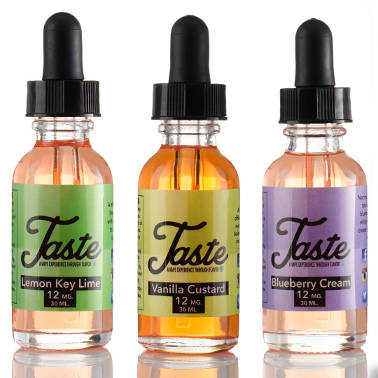
Flavor? Taste? How many taste buds are inside human lungs, the place we suck and briefly hold all smoke? Answer: zero, none!
Imagine blaming continuing use on what we describe as tobacco's wonderful smells and tastes. This rationalization ignores the hundreds of smell and flavor additives used by the tobacco industry to engineer a vast spectrum of sensory sensations.
It also ignores the fact that hundreds of other plants, products and people smell good too but never once did we find it necessary to light any of them on fire and suck their smoke deep into our lungs in order to complete the experience. But if soaked in nicotine, stand back. We'll likely try chewing or lighting them ablaze too.
A 1972 memo from Brown & Williamson consultants entitled "Youth Cigarette - New Concepts" recommends the company create a "sweet flavor cigarettes." "It's a well-known fact that teenagers like sweet products. Honey might be considered." It also recommends apple-flavored cigarettes. "Apples connote goodness and freshness and we see many possibilities for our youth-oriented cigarette with this flavor."[1]
Since 1972, almost 700 industry tobacco flavor additives have been identified including:
Alfalfa extract, allspice extract, anise, angelica root extract, apple fructose, apricot extract, balsam oil, banana fructose, bark oil, basil oil, bay leaf, beet juice, black currant buds, blackberry fructose, beeswax, bergamot oil, brandy, caffeine, cajeput oil, camphor oil, cananga oil, carob bean extract, caramel, caraway oil, carrot seed oil, cassia cocoa, cedarwood oil, celery seed extract, chocolate, chicory extract, cinnamon leaf oil and extract, citric acid, clary sage oil, clove oil, coffee extract, cognac oil, coriander oil, corn oil, corn syrup, corn silk, costus root oil, cubeb oil, cypress oil, dandelion root extract, date fructose, davana oil, dill seed oil, fennel sweet oil, fenugreek, fig juice, ginger oil, geranium rose oil, gentian root extract, grape fructose, honey, hops oil, jasmine, lactic acid, juniper berry oil, leucine, lavandin oil, kola nut extract, lemon oil, lavender oil, licorice, lemongrass oil, lime oil, linaloe wood oil, lovage oil, longosa oil, locust bean gum, linden flowers, menthol, mandarin oil, maple syrup, milk solids, wild mint oil, garden mint oil, mullein flowers, nutmeg, oak moss, oak bark extract, olibanum oil, olive oil, orange leaf, orange blossoms, orange peel oil, orris root, palmarosa oil, peach extract, pear extract, plum extract, peruvian oil, patchouli oil, parsley seed oil, peach kernel oil, pectin, pepper oil, peppermint oil, plumb juice, pimenta leaf oil, pine needle oil, pineapple extract, pipsissewa leaf extract, prune extract, quebracho bark, raisin extract, raspberry extract, rose water, rose oil, rosemary oil, rum, saccharin, saffron, sage oil, sandalwood oil, sclareolide, sherry, smoke flavor, sodium, spearmint oil, spike lavender oil, snakeroot oil, starch, star anise oil, strawberry extract, styrax gum, sucrose syrup, tamarind extract, solanone, tangerine oil, sugar alcohols, sugars, tarragon oil, thyme oil, rye extract, thymol, toasting flavors, tobacco extracts, tolu balsam gum, tagetes oil, tuberose oil, turpentine oil, urea, vinegar, valine, wild cherry bark, xanthan gum, valerian root, vanilla beans and extract, vanillin, vetiver oil, violet leaf oil, walnut extractables, wheat extract, wine, whiskey, yeast and ylang ylang oil.
Tobacco's smells and flavors are highly engineered. The few brands that boast about not using additives use flue-curing for sweetness, genetic engineering, blending and/or faster nicotine delivery (more free-base nicotine) to make tobacco's natural harshness more acceptable to the senses.
If you like one or more additives in your brand, such as licorice or chocolate, then purchase licorice or chocolate and savor their flavors. I doubt you'll feel a need to light either on fire or to vaporize them.
Again, there are zero tastebuds inside our lungs. Advertising suggesting that flavor or taste is the reason we sucked those flavorings deep into our lungs is an insult to our intelligence.
Likewise, it's pathetic for oral tobacco product marketing to suggest that taste is the reason users cannot stop putting taste bud damaging and sensitivity destroying tobacco toxins into their mouth.
As for flavorings, the e-cig industry's massive flavorings spectrum is doing an excellent job of keeping e-cigarette users from noticing that they're not swallowing and digesting purchased flavors, but marinating lung tissues and rocketing them to their brain.

Few e-cig users have any appreciation for the chemicals present in their favorite flavorings, or the long-term cellular consequences of heating, inhaling or mixing them.
Frankly, I thought electronic nicotine's arrival would compel users to immediately see and accept that we are real drug addicts in every sense. I was wrong.
I failed to account for nicotine's amazing grip compelling rapid creation of a host of new use explanations including freedom, recreation, and yes, flavorings.
Have you ever once heard any user tell you that they wanted to become addicted to using nicotine because the flavors arriving with it were so awesome? Probably not.
References:
All rights reserved
Published in the USA
